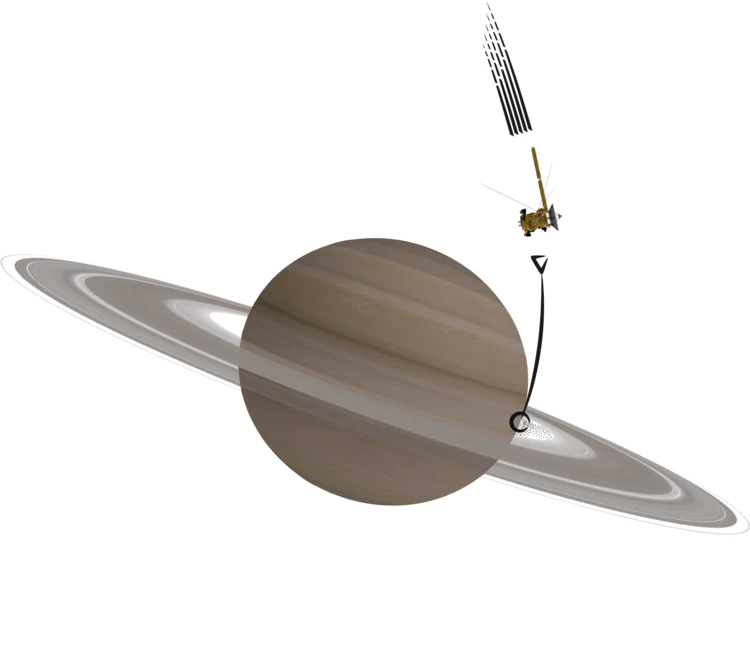
Saturn is eating its D ring – resulting in a complex upper atmosphere
On 23 November, Joshua Dreyer will present his research on Saturn at the Swedish Institute of Space Physics (IRF) and Uppsala University by defending his doctoral thesis, which investigates the effect s and nature of ring material falling into Saturn’s upper atmosphere from its innermost D ring.
The doctoral thesis, Diving Deep into Saturn’s Equatorial Ionosphere with Cassini: Insights from the Grand Finale , focuses on the composition of plasma, charged particles, in the upper part of Saturn’s atmosphere and how our understanding of it has evolved since the discovery of the ring influx.
“ My research shows the signatures of the ring influx to be surprisingly variable throughout any one orbit and between orbits, which may indicate that the ring influx itself varies a lot. New modelling efforts have also suggested that the influx might be a recent phenomenon, at least on astronomical timescales. We seemingly did not see the expected effects on Saturn’s lower atmosphere over the course of the Cassini missio n ”, says Joshua.
Joshua has analysed plasma measurements from multiple instruments on the Cassini spacecraft gathered during the last few orbits of the mission, the “Grand Finale”, which sampled the region between the rings and the atmosphere before Cassini’s eventual disintegration in Saturn’s atmosphere in September 2017.
The infalling ring material consists of water ice and other comparatively heavy species, whereas the main constituents of Saturn’s upper atmosphere are hydrogen and helium.
The “Grand Finale ” revealed the ring material to majorly shape Saturn’s equatorial ionosphere by adding volatile species, resulting in a more complex plasma, which is the focus of Joshua’s studies.
The doctoral thesis also describes the discovery of a shift in the timestamps of the ion data, which was revealed during the investigation of ring shadowing signatures in the ionospheric data. After calculating the position of the shadows, they did not appear exactly at the spots as visible in the data.
“ Initially, this was rather frustrating, and we struggled to find an explanation for this offset. After much discussion and testing, we eventually found the timestamp shift to be the reason, and its correction then perfectly aligned the electron and ion data even on very small scales ”, Joshua adds.
Joshua grew up and completed his undergraduate studies in Germany before coming to Uppsala in 2017 for his master’s studies. He defends his thesis at 13.00 on Thursday, 23 November in the Sonja Lyttkens lecture hall at Ångströmlaboratoriet in Uppsala, Sweden.
The faculty examiner is Prof. Ingo Müller-Wodarg from Imperial College London (UK).
Click here to read the doctoral thesis
Contact:
Joshua Dreyer, PhD, Swedish Institute of Space Physics (IRF) and Uppsala University.
joshua.dreyer@irfu.se
+46 18 4715934


